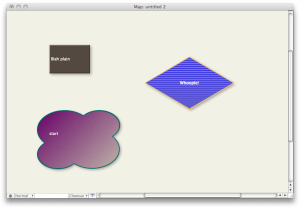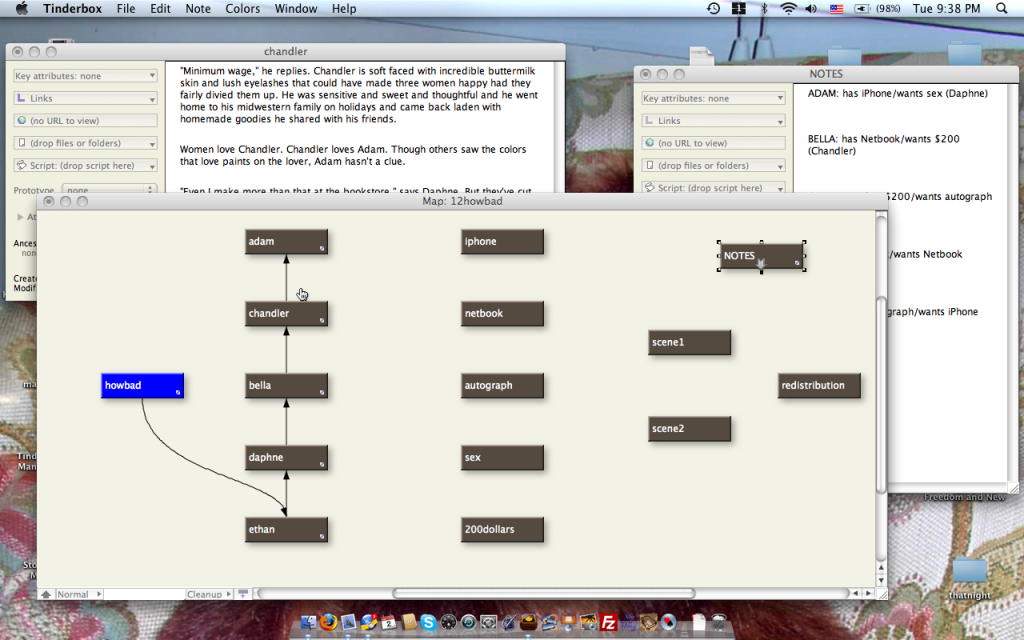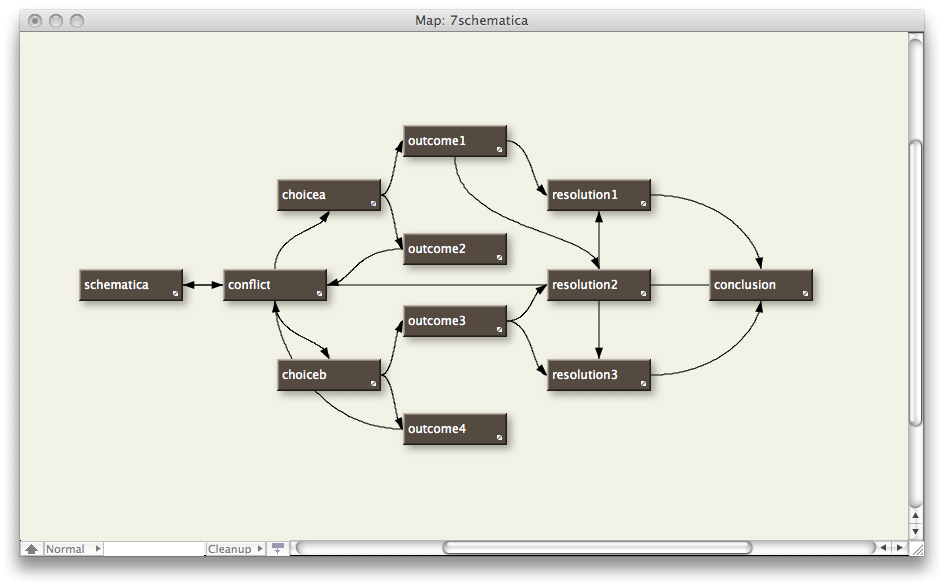While I’ve started creating new color schemes for the individual pieces via css sheets and have overhauled the old into some of the new themes, there are questions and trails of thoughts popping up every hour. Maybe that’s why I only got three hours’ sleep last night.
This is where Tinderbox may be the answer; while I couldn’t seem to work with a single file covering all the separate hypertext stories–I’m sure that there’s a way around this, but for now, each story is a separate file–I can see where the story files, which now include the Tinderbox rendition, an .html, a css, and the hypertext itself with each lexia in an .html file–may need to be linked at some point.
The other connection is the css sheets, which are pat except for the color themes. Right now, I have a separate CSS Folder which holds an individual folder for each different color stylesheet (this enables me to maintain the file name of ‘main100.css’ so that the main100.html does not need to be changed for each hypertext; just copied.
While it would seem to make sense to start with the program and grow outward, it appears that in my own assbackwards way I’ve created the child before the parent. So in between hypertexts, I’ll be working on structure by exploring the Tinderbox Way.




 The Lost Children: A Charity Anthology
The Lost Children: A Charity Anthology